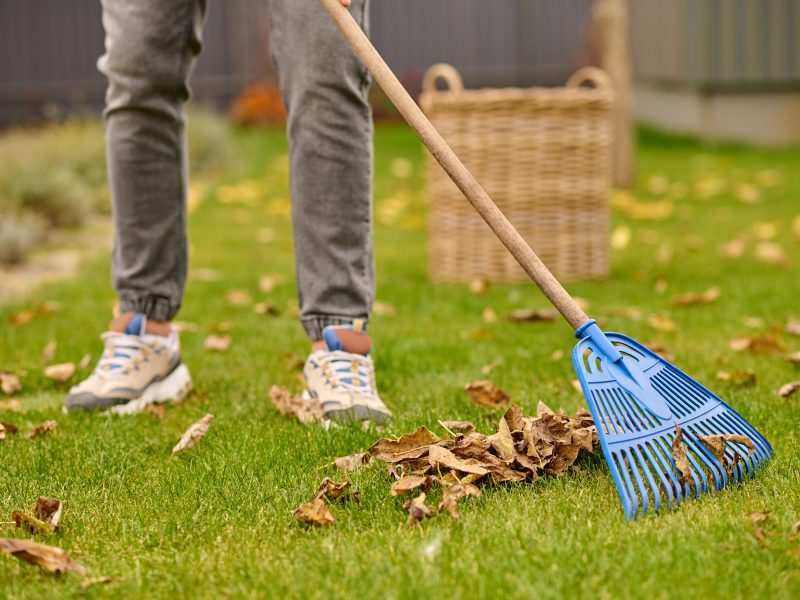
Step into the season of vibrant foliage and crisp air with a well-tended lawn that radiates health and beauty. Welcome to ‘Fall Lawn Care Tips,’ your essential guide to nurturing your outdoor oasis as the autumn leaves begin to fall. As nature prepares for a period of rest, your lawn requires special attention to ensure its resilience and lushness in the months ahead. From clearing fallen leaves to revitalizing soil health, this guide will walk you through the fundamental steps to cultivate a thriving lawn that will greet the next spring with renewed vitality.
Tools and Materials
- Rake or leaf blower
- Aerator or spike aerator shoes
- Grass seeds for overseeding
- Slow-release fertilizer
- Pre-emergent herbicide
- Mower
- Hose or irrigation system
- Soil testing kit
1. Raking and Clearing: Raking and clearing fallen leaves and debris from your lawn is essential to prevent suffocating the grass and promoting fungal growth. A thick layer of leaves can block sunlight and trap moisture. Regularly use a rake or a leaf blower to gather leaves into piles and then either compost them or dispose of them properly.
2. Aeration: Aeration involves perforating the soil with small holes to allow air, water, and nutrients to penetrate deep into the root zone. Aerating your lawn relieves compaction, which can occur over time due to foot traffic and other factors. Aerators or spike aerator shoes create these holes, improving the overall health of your grass.
3. Overseeding: Overseeding is the process of sowing grass seeds over existing turf to fill in thin or bare spots. It helps rejuvenate the lawn, making it thicker and more resilient. Spread the grass seeds evenly using a broadcast spreader, ensuring good seed-to-soil contact. This will give your lawn a fresh, lush appearance.
4. Fertilizing: Applying fertilizer in the fall provides essential nutrients that help grass roots grow strong during the winter. Look for a balanced, slow-release fertilizer with a higher middle number (phosphorus) to encourage root development. Use a broadcast or drop spreader to evenly distribute the fertilizer across your lawn.
5. Weed Control: Preventing weeds in the fall sets the stage for a healthier lawn in the spring. Apply a pre-emergent herbicide to prevent weed seeds from germinating. This helps keep unwanted plants from taking over your lawn.
6. Mowing: As fall progresses, gradually lower your mower blade. Taller grass shades the soil, reducing weed growth, and encourages deeper root growth. However, avoid cutting more than one-third of the grass height at a time. Mow until the grass stops growing, usually after the first few frosts.
7. Watering: Even though the weather is cooler, your lawn still needs water. Deep, infrequent watering encourages strong root growth. Water early in the day to minimize evaporation, and ensure the lawn gets about 1 to 1.5 inches of water per week, including rainfall.
8. Soil Testing: Conducting a soil test helps you understand the nutrient levels and pH of your soil. You can purchase a soil testing kit or send a sample to a local extension office. The results will guide your fertilization efforts, ensuring you provide the right nutrients in the right amounts.
By following these steps and paying attention to each aspect of fall lawn care, you’ll create a strong foundation for your lawn’s health and vitality. Taking these measures ensures that your lawn remains resilient through the winter and is ready to thrive when spring arrives. If you need help for caring your lawn in Fall, you can contact us. We will help.

Comments